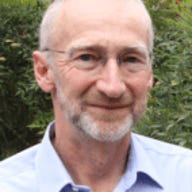AARNet launches Australian SDN testbed

AARNet has formally launched an Australian software defined networking (SDN) testbed linking researchers in nine universities and Data61 -- the merged NICTA/CSIRO Digital Productivity unit -- with grant funding from the Australian Research Council.
The announcement was made on Monday at the OpenTech OZ SDN Symposium in Sydney by David Wilde, AARNet CTO for network architecture. It follows a 2014 application for grant funding from Vijay Sivaraman, associate professor in the School of Electrical Engineering at UNSW.
Latest Australian news
"The infrastructure we have put in place has been funded in large part by a LIEF [Linkage Infrastructure, Equipment and Facilities] grant from the Australian Research Council that Vijay managed to win in conjunction with nine other universities," Wilde told ZDNet. "It ended up being about $350,000."
The ARC funding is for three years and is already approaching the end of the first year.
"We have half the sites connected and by the end of the month we should have them all connected," Wilde said.
The nine universities participating are: The University of Adelaide; the University of NSW; The University of Technology Sydney; RMIT University; the University of Queensland; the University of Wollongong; the Australian National University; Swinburne University of Technology; and Macquarie University.
"We have put in place a central SDN hub across the AARNet network and each of the universities and Data61 have installed SDN gear at their own sites and we connect back to the central hub," Wilde said. "This enables researchers at the different sites to run experiments and to collaborate across infrastructure that simulates the actual internet."
The central hub is made up of switches in Sydney, Adelaide, Perth, and Seattle enabling researchers to send traffic over intercontinental distances, which they would not be able to do within their own networks, Wilde explained.
AARNet also hopes that the Seattle hub will enable collaborative research with overseas institutions.
"We have already brought up collaboration with ESNet [the Energy Sciences Network operated by the US Department of Energy]," Wilde said. "We are also planning to collaborate with Internet2, which is the US equivalent of AARNet, and with another global SDN testbed run by AmLight [a research network that links institutions in the US and in South America]."
"The focus we are taking is on interdomain SDN. There has been a lot of work done by Google and others on SDN within a datacentre but that is all sitting within one organisation," Wilde said.
"What we are trying to enable with this testbed is the notion of SDN between organisations. That has applications for internet exchange points for service providers and so on. There is enormous complexity and possible security issues around this. It is something that has not been examined too much at the moment."
Quality of service is another issue that Wilde wants investigated.
"How do you guide traffic on high quality paths and prioritise that over other traffic? That is something that interests me for AARNet. We have two paths to Singapore. One is a very long path that is generally underutilised. The other is much shorter but often congested. So can I send the big slow flows over the long path and the quick ones sensitive to reactivity over the short path?"
AARNet is using switches from Noviflow for its nodes and the ONOS OpenFlow controller. Wilde said individual institutions could choose their own hardware and software and that a number were using Pica8 switches and software, and the Vandervecken OpenFlow controller, developed by Google. OpenFlow is an open source protocol that defines communication between control software and switches in an SDN.